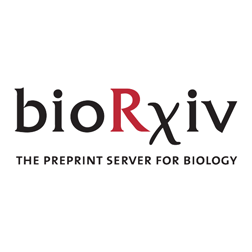
Aparna Bhaduri
@BhaduriLab
Followers
1K
Following
2K
Media
18
Statuses
229
Assistant Professor at UCLA in the Department of Biological Chemistry
Joined March 2019
So excited to share this paper led by @ShivaniBaisi_MD! Check out iHOTT!!.
🧵Excited to share our new preprint introducing iHOTT - an autologous tumor-immune co-culture model that captures patient-specific responses in #Glioblastoma . 💥Now on @biorxivpreprint: 📝From @BhaduriLab in collaboration with @UCLANsgy.
0
5
18
A huge thank you to the amazing collaborators and members of the Bhaduri Lab for their contributions to this study! Antoni Martija, @prnano9, @Jalbsoto, Dan Jaklic, @MilJessenya, Rista White, @JacquiMMartn1, Dakshesh Rana, @GeschwindLab.
0
0
0
Our findings suggest that the early entry of thalamocortical afferents in human and nonhuman primate cortex mediates communication with cortical progenitors. This demonstrates that the human thalamus actively sculpts cortical architecture during early development! 🧩.
1
0
0
Leveraging the tractability of the organoid model, we knocked out thalamic NRXN1 to show that when disrupted, thalamic axons fail to form stable contacts with cortical outer radial glia, leading to impaired upper layer neurogenesis.
1
0
0
Our key player: NRXN1, a cell adhesion molecule expressed by thalamic neurons directly contacts outer radial glia.🤝 We identify NRXN1-NLGN1 gene expression and protein colocalization along thalamocortical afferents and outer radial glia the assembloids and human primary tissue.
1
0
0
Cre-dependent anterograde tracing demonstrates that thalamocortical axons make physical connections with cortical outer radial glia - a primate-enriched progenitor cell type central to cortical expansion. 🧠 But what types of cell-cell interactions mediate this contact?
1
0
0
Interestingly, severance ✂️ of the thalamic input midway through neurogenesis maintains these increased upper layer neurons. But how is early thalamic input changing the future fate of cortical cell types? Our work indicates communication with progenitors may be the answer…
1
0
0
Utilizing the human thalamocortical assembloid model, we show that thalamic input increases the generation of upper layer cortical neurons compared to cortex-only controls. 🧫 This work shows extrinsic cues like thalamic input can shape intrinsic cortical programs.
1
0
0
Excited to present our new preprint led by @claudianguyen95 uncovering how thalamic input shapes human cortical development! We discover that thalamic axons promote upper layer cortical neurogenesis through NRXN1-mediated contacts with outer radial glia.
biorxiv.org
According to the protocortex hypothesis, extrinsic thalamic signaling is necessary for refining cortical areas and cell types, but the mechanism by which these inputs shape the development and...
2
6
45
RT @BaulacS: 📢 Paper out! FCDII is more complex than expected - somatic mTOR-activating mutations affect multiple cell lineages, yet only a….
0
2
0
RT @UCLA: A new UCLA study leverages computational methods and existing data to bring us closer to answering the question: How does the bra….
newsroom.ucla.edu
A new UCLA study leverages computational methods and existing data to bring us closer to answering: How does the brain build itself?
0
8
0
RT @NatureNeuro: Parallel meta-analyses of the human cortex in development (seven datasets) and adulthood (16 datasets) generated over 500….
nature.com
Nature Neuroscience - Nano et al. introduce a pipeline to generate meta-atlases of the human brain from existing single-cell datasets and extract gene modules linked to cell fate specification....
0
37
0
Congrats @prnano9! We are thrilled that this paper is out, check it out!.
It’s out! The first paper from my postdoc – and first from the @BhaduriLab – is now live @NatureNeuroscience. 🧠✨ (1/5).
1
1
23
RT @UCLAHealthJCCC: How does the brain build itself & how can this knowledge help fight brain cancer? A new @NatureNeuro study from the @Bh….
uclahealth.org
A new UCLA study leverages computational methods and vast troves of existing data to bring us closer to answering one of the most profound questions in biology: How does the brain build itself?
0
2
0
@MilJessenya @Jalbsoto @ChristofkLab We hope this dataset including metabolomics and scRNA-seq data will be useful to others who are interested in metabolism and cortical cell fates! Shoutout to Madeline Andrews and all of our collaborators and the @UCLAstemcell for contributions and input on this project.
0
0
4
@MilJessenya @Jalbsoto @ChristofkLab This led us to a model that indicates that glycolysis, through PPP, seems to restrict radial glia from generating oRGs, astrocytes, and inhibitory neurons too early in development. This may be why inhibition of glycolysis and PPP led to an increase of these cell types.
1
0
2
@MilJessenya @Jalbsoto @ChristofkLab To test if PPP was guiding radial glia cell fate, we (painfully) extracted EGFP labeled radial from organoids and knocked down PPP genes. Indeed, same story. More oRGs, astrocytes, and inhibitory neurons paired with a decrease in PPP metabolite abundance.
1
0
1
@MilJessenya @Jalbsoto @ChristofkLab This was fascinating because PPP also peaks in primary tissue at the same time as glycolysis. Was glycolysis working through the PPP? We tested this by inhibiting PPP with pharmacological inhibition, and also saw an increase in oRGs, astrocytes, and inhibitory neurons.
1
0
1
@MilJessenya @Jalbsoto @ChristofkLab Organoids love sugar! Using staining and scRNA-seq, we saw an increase in outer radial glia (oRGs), astrocytes, and inhibitory neurons. When we examined metabolite abundance in this experiment many pathways, including the pentose phosphate pathway (PPP) were downregulated.
1
0
2
@MilJessenya @Jalbsoto @ChristofkLab This was intriguing because glycolysis has been a flash point and somewhat controversial in organoids. Is it up in organoids? And if so, does it impact cell fate? We tested this by lowering glucose levels in organoid culture and measuring how cell types changed.
1
0
1












